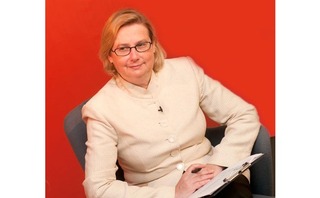
Sponsored Q&A: BNY Mellon

Video: BNY Mellon sponsored Q&A
HEDGE FUNDS REVIEW: How do you define prime custody?
Marina Lewin, global head of business development, BNY Mellon: It is a service we offer our hedge fund clients as an alternative to working with their prime brokers on the custody of certain assets. We hold their unencumbered assets in cash and segregated accounts in the name of the hedge fund, and we hold those assets off-balance sheet.
Prime custody is essentially segregating the assets and working with prime brokers and other service providers to ensure that hedge fund managers can still have operational flexibility to move and manage their assets.
Following the financial crisis, hedge funds began to pay increasing attention to the custody of their assets and the counterparty risk profiles of their partners. Custodians responded by forming new business units to focus on the specific needs of hedge fund managers. BNY Mellon was a leader in this field by offering this service very early on in the crisis, and we saw rapid growth of the assets under custody for our business.
In 2012, custodians have dedicated service teams for the hedge fund managers that really understand their market segment. They work on their sales and service efforts to come through with the best model that accommodates the needs of the hedge fund manager.
HEDGE FUNDS REVIEW: Why is prime custody an important consideration for hedge funds now?
Marina Lewin: From the perspective of a hedge fund manager, there are two primary drivers. One is the independence provided by the business model of prime custodians. The assets are generally held off-balance sheet with little risk of rehypothecation. From a counterparty risk perspective, the assets are in a place that makes investors and hedge fund managers comfortable. Transparency is also a key driver, either directly through the prime broker or with a custodian independent of the prime broker.
HEDGE FUNDS REVIEW: From an institutional investor point of view, why is it important for a hedge fund to have a prime custodian?
Marina Lewin: Institutional investors are looking for that transparency and counterparty risk basis that a prime custodian can provide. They know the prime broker is really directing the margining and the lending of encumbered assets. However, for unencumbered assets, they know it is safe off-balance sheet. And, in case of difficulty at the prime broker or in the market place, they will have easy access to those assets.
HEDGE FUNDS REVIEW: What trends are you seeing? Are there differences in how prime custody is developing?
Marina Lewin: Traditionally, in the alternative business, it was generally a one prime broker model. That was the first thing to change: diversification and specialisation among the prime brokers. For a small hedge fund, it is difficult to have multiple service providers. But a hedge fund above $1 billion will typically work with several prime brokers to diversify risk as well as to have access to specialised trading within each of the prime brokers. These larger managers will also work with a prime custodian placing those unencumbered assets with them or with the prime custodian in partnership with the prime brokers to have segregated assets that can be easily moved back and forth between the custodian and the prime broker. These two models have been evolving and have been in place for some time now.
In the US, the model has evolved over the last four years. Europe has a different model as it always had an external administrator. Data flows were always at little bit easier.
Asia is an unusual market because of its size and the role the prime broker plays in terms of capital introduction. Because Asian funds are, on average, smaller, it has been difficult for them to diversify service providers, as it is more expensive for a small fund to have two or three prime brokers and a custodian. They were also slightly later in terms of looking at it from counterparty and transparency risk perspectives.
As hedge fund launches have become larger in Asia, and as more global institutions invest into Asian managers, some of the same criteria for seeking prime custodial services have started to evolve there.
 HEDGE FUNDS REVIEW: BNY Mellon recently conducted some research on prime custody and how it is evolving. What are some of the highlights of the findings?
HEDGE FUNDS REVIEW: BNY Mellon recently conducted some research on prime custody and how it is evolving. What are some of the highlights of the findings?
Marina Lewin: Around $684 billion in assets are available for prime custody. That is up about 40% since 2010. There are two reasons for that growth. First, hedge funds have grown steadily since 2010. Institutional investors see hedge funds as an alternative for relative return. Second, as there is less leverage in the markets due to hedge funds continuing to deliver, more unencumbered assets are available to their prime custodian.
The paper discussed the two models for prime custody that have evolved. The first is where the prime broker becomes the intermediary with their systems and technology utilised by the hedge fund manager, and where the assets flow directly to the custodian through the prime broker. However, there were several managers who said no to this model and wanted direct control of their assets, with the accounts controlled by the hedge fund manager. In either case, the accounts are in the name of the hedge fund with an access agreement available to the prime broker so they are authorised to move certain transactions to ease the flow.
HEDGE FUNDS REVIEW: Which model will dominate in the future?
Marina Lewin: Hedge fund managers are very much interested in their own destiny. To the extent that they have the technology to do this, manage the back and forth of their assets among prime brokers and prime custodians, I think that they will look to do it themselves. On the other hand, the models that use the connectivity with the prime brokers have been very effective. Some of the regulatory requirements – for example, in the Alternative Investment Fund Managers (AIFM) directive – detail how assets should be held and whether they should be held by custodians or by the depository bank. You will see some of those models that use the prime broker. We are indifferent; we are happy with either model and we have seen growth in both.
HEDGE FUNDS REVIEW: Is there a checklist of tips you can give to a hedge fund manager and to investors of what they should be looking for in a prime custodian?
Marina Lewin: Number one is the safety and strength of the service provider on the custodial side. That is key. Second is the amount of automation that can be gained. If you are trying to buy and hold assets, that requires one level of service. However, if you are moving assets between various primes and custodians in line with your leverage requirements, having that automation in place and levels of controls becomes important.
Third, it is the expertise of the prime custodian – one that understands the hedge fund market and the needs of a hedge fund manager or hedge fund and its trading activity. Hedge fund managers need to look for a basket of criteria including financial safety, level of automation, level of client service, and the ability to service the underlying assets.
HEDGE FUNDS REVIEW: What do you think is going to happen with prime custody and the future of the industry going forward?
Marina Lewin: In 2008, few thought the prime custody model was going to be here to stay. At the time, people believed equilibrium in the markets would be achieved faster and it would be possible to go back to a typical prime broker model. We haven’t seen that.
We have seen continued growth in prime custody, continued deleveraging of the industry itself and utilisation of certain derivative instruments to assist synthetically in some growth.
Prime custody is here to stay. The partnerships between prime brokers and prime custodians are very strong. That will continue to evolve. In the aftermath of the crises, it is important to understand where the regulatory environment is going so models can be established. As markets hopefully settle down, more business opportunities will come and a more normal regulatory environment will be established. Institutional investors will continue to come into alternatives because they see the opportunity from an investment perspective.
Hedge fund managers are innovative business thinkers. They will have new ideas in terms of how to structure their products and how to manage money, so that is positive for investors, as well as being within the new regulatory norms.
The hedge fund industry is maturing and it is now a fixed part of the institutional investor’s portfolio. So a mature industry – albeit one that still has significant growth opportunities – has to comply in different ways to do business, particularly in this environment. Hedge fund managers realistically understand that. They are not always happy about it, but they understand what the new normal entails.
Material contained within this presentation is intended for information purposes only. It is not intended to provide professional counsel or investment advice on any matter, and is not to be used as such. No statement or expression is an offer or solicitation to buy or sell any products or services mentioned. The views expressed within this presentation are those of the contributor only and not those of The Bank of New York Mellon or any of its subsidiaries or affiliates, and no representation is made as to the accuracy, completeness, timeliness, merchantability or fitness for a specific purpose of the information provided in this presentation. This does not constitute BNY Mellon Alternative Investment Services advice, or any other business or legal advice, and it should not be relied upon as such.
View the article in PDF format
Video: BNY Mellon sponsored Q&A
Sponsored content
Copyright Infopro Digital Limited. All rights reserved.
You may share this content using our article tools. Printing this content is for the sole use of the Authorised User (named subscriber), as outlined in our terms and conditions - https://www.infopro-insight.com/terms-conditions/insight-subscriptions/
If you would like to purchase additional rights please email info@risk.net
Copyright Infopro Digital Limited. All rights reserved.
You may share this content using our article tools. Copying this content is for the sole use of the Authorised User (named subscriber), as outlined in our terms and conditions - https://www.infopro-insight.com/terms-conditions/insight-subscriptions/
If you would like to purchase additional rights please email info@risk.net